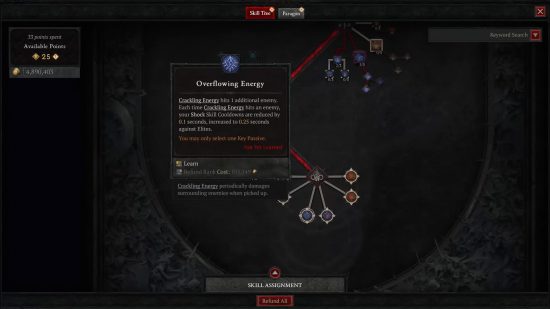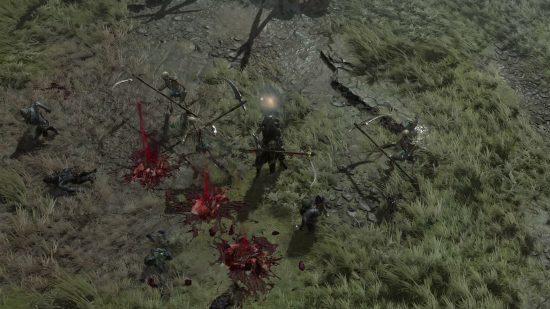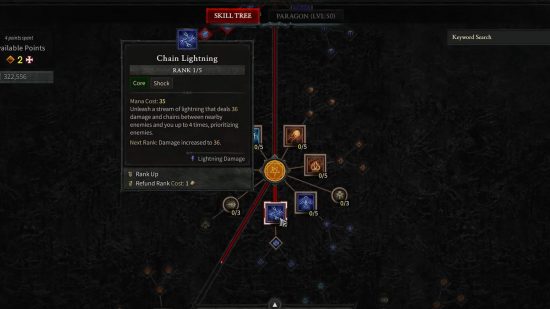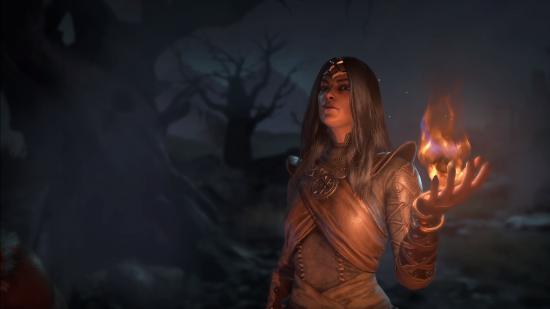How do Diablo 4 skill trees work? As you begin your descent into Hell, you may want to learn more about how skill trees shape your character over the course of your playtime.
To help you make the most of the skill trees in Diablo 4, it’s important to get to grips with the Diablo 4 classes first. As for the skill trees themselves, Blizzard is “currently aiming for 30-40% of the nodes filled in for endgame, so that players can have very distinct, and different ways they build out their character.” To help you decide on which skill branches to invest in, here’s how Diablo 4 skill trees work in the dungeon-crawling RPG game.
Diablo 4 skill tree explained
The Diablo 4 skill tree is the system used to unlock the active and passive skills available for each character. As you level up, you will earn more skill points to spend in your skill tree. It’s a fundamental part of building your character since it contains all the skills available to craft the best build according to your class. Diablo 4 weapons and item rarity also affect the skills you pick, enhancing or synergizing them.
The skill tree works as a branching path to access new and more powerful skills, representing your character’s development. This path is comprised of a series of nodes that are unlocked by spending skill points. While each class has specific trees related to their kits, all five classes have a basic node, a core node, a defensive node, and an ultimate node. Each of these nodes groups different skills that share the same function, but with different mechanics and properties.

Here’s a brief rundown of what the Diablo 4 skill trees feature for each class:
- Barbarian: With skills that have the potential to taunt enemies and use their attacks against them, the best Barbarian build is best for those who would like to use different weapons.
- Sorceress: The best Sorcerer build has a good variety of elemental skills that can synergize quite well to deal great single-target or area-of-effect damage.
- Druid: Compared to other kits, the Druid skill tree is one of the most versatile among the game’s roster of characters, since it allows you to focus on damage as well as utility.
- Rogue: Focused on fast-paced combat at mid-to-long range, the Rogue comes with a skill tree filled with combos and abilities that boosts their damage, such as poisons and traps.
- Necromancer: The Necromancer‘s skill tree comes not only with the abilities that allow you to summon powerful corpses to fight for you but also to deal a good amount of direct damage.

Each node contains active and passive skills, represented as a square and a circle, respectively. To unlock both types of skills, you must spend at least one skill point on them. After that, you can spend more points in order to increase their ranks, making them more powerful.
Active skills are the ones you use during a fight or as you walk with your character around the Diablo 4 map. They must be equipped in your action bar, and they can also be improved a maximum of five times each. What’s more, active skills are tied to specific types of weapons, so depending on the builds you’re running, you may need to carry more than one weapon. Conversely, passive skills don’t appear on the action bar, since they come into effect automatically once they are unlocked.
Every active skill has one enhancement and two upgrades each. While both are represented with small lozenges connected to the square skill, the former only increases the effects of the skill, and the latter may also change its mechanics. After a skill is unlocked in a node, your next skill point can be spent unlocking its enhancement, and then you can pick one of the upgrades. Only one upgrade can be chosen per skill.
How to earn skill points in Diablo 4
You can have a total of 63 skill points in Diablo 4, and since progressing through the skill tree demands skill points to unlock new nodes, we recommend focusing on earning them to prepare your character for the Diablo 4 endgame. There are two sources of skill points in the game. The first one is through leveling. Whenever you level your character up, you earn one skill point. While the Diablo 4 max level cap is 100, you stop earning skill points after level 50.
The second method, and the one you need to do to acquire the remaining skill points, is completing activities in the ARPG‘s regions. By exploring the maps you earn points in the Diablo 4 Renown system, which rewards you with additional skill points. Although some rewards from the Renown system are shared among characters, skill points are not, so be sure to take the time to unlock them for your alternative characters.

Diablo 4 skill tree builder
Created by u/lowpoly-nomad22, this Diablo 4 skill tree builder includes the full skill trees for all five classes and allows you to spend 63 points, which is the maximum number of skill points in the game, freely to see their effects. You can refund all of the points too, similar to respeccing in the game, to try a different approach.
That’s everything we know about the Diablo 4 skill tree, as well as how to earn skill points and respec your character. We’ve also got some handy tips that are sure to help both new and returning players find their feet in Sanctuary and a guide on the best Diablo 4 builds. Finally, here’s everything you need to know about the Diablo 4 battle pass, to better understand how it affects the overall experience with the game.
